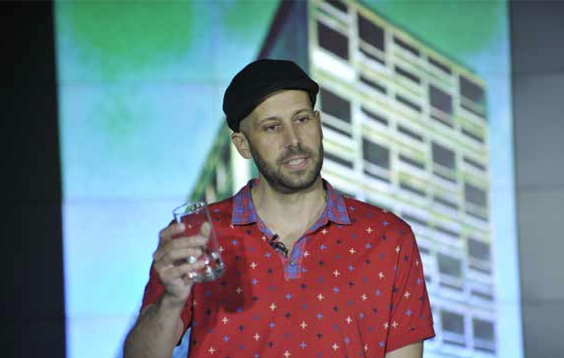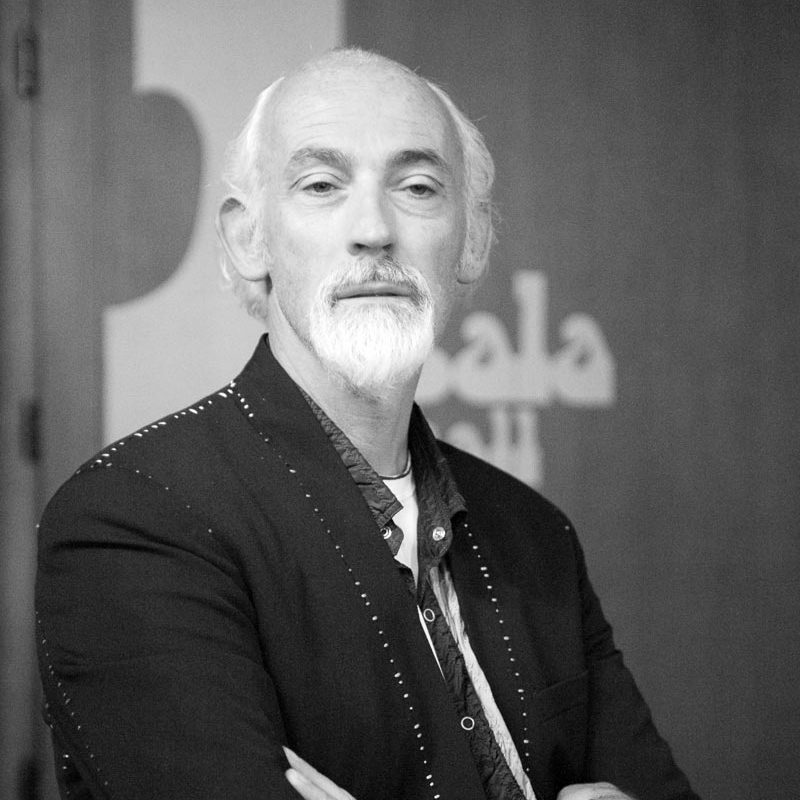
INTERVIEW WITH TOM STRALA – ICON Design Magazine
The Swiss designer spoke to Icon during Belgrade Design Week about quality, compromise and the importance of failure.
Zurich-based designer Tom Strala’s diverse portfolio includes a railway station, the set of a Hollywood movie and projects for Zaha Hadid, Norman Foster, David Chipperfield and Herzog de Meuron.
In a philosophical lecture at Belgrade Design Week last week about the importance of context in design, he encouraged the audience to “kill automatism” – to challenge automatic thinking that leads to predictable results.
Although he trained as an architect, Strala is now predominantly a product designer. He spoke to Icon about his work.
Your practice is celebrating its 10th anniversary this year. How do you think your approach to design has changed over the course of your career?
In the beginning I was concerned with what my style is. Now I’m better able to reflect on what is relevant – and I know that it is quality, not style. I also don’t get as nervous as I used to when I don’t succeed. Now, not succeeding is interesting to me and I know I have to fail many times to come up with something new.
That’s why I no longer do architecture – in that field, you can’t fail; you only have one chance and that means you don’t take risks. In my work, I can take a lot of risks. Sometimes it works and sometimes it doesn’t, but that’s life.
How different is designing products to designing buildings and how do you adapt your approach to these different scales?
For me, it’s the idea that’s important – not the material or size. Even something small like a stool can have many ideas behind it, just like a big house. Both are about the way you think and the process. But it was an easy decision to switch to design. In architecture, so many people contribute to the creation process that it’s hard to get a result that’s not mainstream.
Everybody involved in a building wants to see a little bit of themselves in it and you end up with a compromise. That’s great for politics, but less so for architecture, art or design.
But you’ve done many collaborations, which I’m sure involves some compromise. Do you enjoy working with big- name architects and designers such as Zaha Hadid?
I like to work with people who are creative and those who like pushing boundaries. Having a big name on board is good, but not necessary. It doesn’t always correspond to value.
When I worked with Zaha Hadid, I was working with people who work for her. But that didn’t matter – what was important was working with people with great minds. People who work for her could have brilliant or not so brilliant minds. I have no idea if she has a brilliant mind!
Tell me about your latest product.
The Animal Farm lamp is a project about transformation and mutation. The lamp comprises a brass pipe cracked down the middle. When you have a crack in metal, you could buy a new piece or do what I’ve done and make a hole at the end of the crack to split it so the forces go around the crack.
I find it interesting to devise intelligent solutions out of a material’s typical behaviour. This product is about understanding the material, not pressing it into a form you want, like you would when making a car.
Which of your projects do you like the most?
Bartok, my concrete table, is about a moment we always want to hide. The iron inside a building is always hidden and nobody values it, even though you need both the concrete and the iron for a building to hold together. My table shows off this iron, changing our perspective on the material and what is beautiful.
Another is the Frankenstein chair. I had a friend I used to make fun of because I thought she was always trying to be everything – shy and polite as well as crazy and rude – then I realised I was just like her and that this was very common. That was the starting point of the Frankenstein chair – I took several classic chairs everyone knows and put them together. We feel like when we put many things together like this we get something new, but that isn’t always the case.
Read the original news here.
Trackback from your site.
